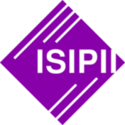Perkembangan Children's Literature dalam Folklor di Perpustakaan: Studi Content Analysis
Abstract
Keywords
Full Text:
PDF (Bahasa Indonesia)References
Agbenyega, J. S., Tamakloe, D. E., & Klibthong, S. (2017). Folklore epistemology: How does traditional folklore contribute to children’s thinking and concept development? International Journal of Early Years Education, 25(2), 112–126. https://doi.org/10.1080/09669760.2017.1287062
Albekov, T. K., Alpysbayeva, K. B., Auyesbayeva, P. T. (2017). Distinctive and educational features of Kazakh folklore by the example of: Words of Ancestors. Espacios, 38(45). http://www.revistaespacios.com/a17v38n45/a17v38n45p33.pdf
Baan, A. (2021). Folklore in literature learning as a model for developing cultural characters and students personality. ISLLAC: Journal of Intensive Studies on Language, Literature, Art, and Culture, 5(1), 83–93. http://journal2.um.ac.id/index.php/jisllac/article/view/19073/7265
Massie, J. (2019). Medical conditions revealed in fairy tales, folklore and literature. Journal of Paediatrics and Child Health, 55(11), 1295–1298. https://doi.org/10.1111/jpc.14615
Mayring, P. (2014). Qualitative content analysis: Theoretical foundation, basic procedures and software solution. gesis. https://www.psychopen.eu/fileadmin/user_upload/books/mayring/ssoar-2014-mayring-Qualitative_content_analysis_theoretical_foundation.pdf
Mohajan, H. M. (2018). Qualitative research methodology in social sciences and related subjects. Journal of Economic Development, Environment and People, 7(1), 1–29. http://ojs.spiruharet.ro/index.php/jedep/article/view/jedep.v7i1.571/pdf
Neuman, W. L. (2014). Social research methods: Qualitative and quantitative approach. Pearson Education Limited.
Olajide & Stephen, B. (2010). Folklore and uclture as literacy resources for national emancipation. International Education Studies, 3(2), 200–205. https://doi.org/10.5539/ies.v3n2p200
Undang-Undang Republik Indonesia Nomor 43 Tahun 2007 Tentang Perpustakaan, Pub. L. No. 1 Nopember 2007. Lembaran Negara Republik Indonesia Tahun 2007 Nomor 129. Jakarta. Retrieved from (2007). http://www.bpkp.go.id/uu/filedownload/2/36/176.bpkp.
Undang-Undang Republik Indonesia Nomor 5 Tahun 2017 Tentang Pemajuan Kebudayaan, Pub. L. No. 24 Mei 2017. Lembaran Negara Republik Indonesia Tahun 2017 Nomor 104, Presiden Republik Indonesia 1 (2017). https://www.jogloabang.com/pustaka/uu-5-2017-pemajuan-kebudayaan
Sitnikova, A. A. (2016). Nganasan children literature: History and specifics. Journal of Siberian Federal University. Humanities & Social Sciences, 9(9), 2005–2012. https://doi.org/10.17516/1997-1370-2016-9-9-2005-2012
Smith, C. E. (2015). Folklore and children’s literature: A Content analysis of the de Grummond children’s literature collection. SLIS Connecting, 4(2), 1–20. https://doi.org/10.18785/slis.0402.07
Trimansyah, B. (2020). Panduan penulisan buku cerita anak. Badan Pengembangan dan Pembinaan Bahasa.
DOI: https://doi.org/10.20961/jpi.v7i2.51641
Refbacks
- There are currently no refbacks.
License URL: https://creativecommons.org/licenses/by-nc-sa/4.0/




.png)
.png)









1.jpg)
